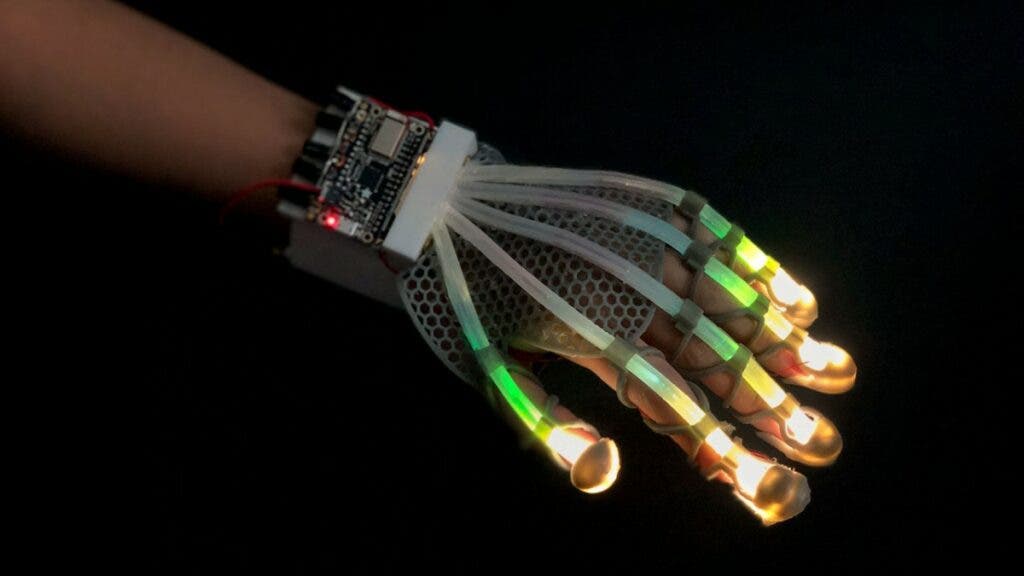
Virtual Reality and its cousin Augmented Reality have come a long way in the last decade. But despite phenomenal progress in motion tracking and 3-D graphics, the immersive experience is lacking in the non-visual department. When you put on a VR headset, it may look and sound like you’re in another world but your body is still firmly rooted in reality. But VR may be in for an upgrade to the next level of sensory experience if these nifty gloves are any indication.
Designed at Cornell University, these gloves are fitted with stretchable fiber-optic sensors that can replicate the complex touch of your fingers in a VR environment — the implications could be pretty wild.
“Let’s say you want to have an augmented reality simulation that teaches you how to fix your car or change a tire. If you had a glove or something that could measure pressure, as well as motion, that augmented reality visualization could say, ‘Turn and then stop, so you don’t over-tighten your lug nuts.’ There’s nothing out there that does that right now, but this is an avenue to do it,” Rob Shepard, an engineering professor at Cornell and lead author of the new study, said in a statement.
Shepard and colleagues have been working with stretchable sensors since 2016. These sensors measure changes in the intensity of light shined through an optical waveguide in order to determine a material’s level of deformation. The team has, so far, developed all sorts of sensory materials such as optical lace and foams, as well as a stretchable lightguide for multimodal sensing (SLIMS). This latter experimental material is the focus of the researchers’ new study published Science.
SLIMS consists of a long tube fitted with a pair of polyurethane elastomeric cores. One of the tubes is transparent, the other is filled with absorbing dyes and connected to an LED. Each core is coupled with a red-green-blue sensor chip to register geometric changes in the optical path of light.

Thanks to this dual-core design, the sensors can detect fine hand gestures, being able to convey pressure, bending, or elongation.
The researchers fitted SLIMS sensors onto each finger of a 3D-printed glove, which they powered with a regular lithium battery. Sensor data was relayed via Bluetooth to a computer that reconstructs the glove’s movements and deformation in real-time.
“Right now, sensing is done mostly by vision,” Shepherd said. “We hardly ever measure touch in real life. This skin is a way to allow ourselves and machines to measure tactile interactions in a way that we now currently use the cameras in our phones. It’s using vision to measure touch. This is the most convenient and practical way to do it in a scalable way.”
For now, the researchers are working to patent the technology with immediate applications in physical therapy and sports medicine. Both fields are already benefiting from motion-tracking technology but have lacked the ability to leverage force interactions until now.


